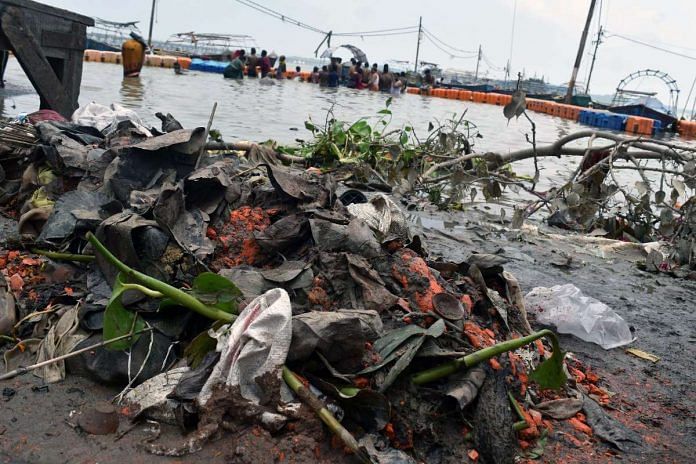New Delhi: India was the fourth worst-hit by natural disasters in 2021, and saw internal displacement of 49 lakh people the same year, according to the 2023 State of India’s Environment report. The report was released by the Centre for Science and Environment (CSE) Thursday.
The over-400 page report covers a range of issues affecting India’s sustainable development in relation to the environment. This year’s edition highlights the effect of a changing climate on livestock, seasonal variations, and the potential to decarbonise hard-to-abate sectors such as aviation, steel and shipping, among others.
“There is news to cheer. Environment is now mainstream – we are all outraged at how pollution is affecting our health or climate change is devastating our future. But the bad news is that we are not acting (given the) scale of the devastation that we see around us. We need to take more deliberate steps to reverse the damage,” said CSE director Sunita Narain at the launch of the report.
India was worst-hit by natural disasters after China, the Philippines, and Ethiopia, the report said, citing data from the Geneva-based Internal Displacement Monitoring Centre.
According to CSE’s own data, India was hit with an extreme weather event nearly every single day from January to October in 2022, resulting in the deaths of 2,900 people.
ThePrint looks at the other key aspects of the report.
Also read: Equitable climate action needed to secure future, says IPCC in latest report
Livestock
Fodder can be sourced from crop residue, cultivated fodder and forage, and grazing lands. But “in the upcoming years, productivity improvements and a transition to semi-intensive or commercial production techniques for livestock will be the main factors driving greater feed and fodder requirements,” the report says.
To meet the demand, the report says, the relationship between climate change and livestock farming should be better understood, to close any adaptation gaps that might exist. The government should also “envisage a comprehensive national fodder and pasture management policy which has the provisions for a clear-cut demarcation of pasture and grazing land,” so they are not diverted for other purposes.
The Himalayas
A study by the Himachal Pradesh Council for Science Technology and Environment found that between 2019-2020 and 2020-2021, the snow cover in Himachal Pradesh reduced from 23,542 sq km to 19,183 sq km. Most river basins in the state also experienced a loss, with the maximum borne by the Sutlej basin which covers 45 per cent of the total geographical area. The ice-covered area of the Sutlej has reduced from 11,823.1 sq km to 9,045 sq km during the same period, according to the report.
“The impact is equally evident in the cold deserts of Ladakh, where the temperatures are consistently rising and the warm weather now lingers on much longer. Precipitation in the form of rain and snowfall is also on the decline,” it adds.
Forests and biodiversity
The report analysed the India State of Forest Report, released by the Forest Survey of India last year, and found that though forest cover had increased by 0.5 per cent between 2017 and 2021, “the bulk of the increase has taken place in the open forest category, which includes commercial plantations. This has happened at the cost of moderately dense forest, which is normally the area closest to human habitations. At the same time, very dense forests, which absorb maximum carbon dioxide from the atmosphere, occupy just 3% of total forest cover.”
It found that forest cover reduced in 244 of the 638 districts assessed in 27 states and five Union Territories. It also highlighted that, by 2030, 45 per cent of India’s forest and tree cover will emerge as “climate hotspots,” making them vulnerable to temperature rise and erratic rainfall.
Decarbonisation of iron, steel
The report notes that there are “huge opportunities to bend the greenhouse gas emission curve from the iron and steel sector in India by 2030″. India has pledged to reduce its emissions intensity of GDP, the volume of emissions per unit of GDP, by 45 per cent by 2030, and the iron and steel sectors account for five per cent of India’s greenhouse gas emissions.
According to the CSE’s projections, greenhouse gas emissions will grow by nearly 2.5 times — to 659.19 million tonnes annually by 2030 — compared to current levels if business continues as usual, and there are no policy changes or interventions.
The report recommends switching to natural gas-based synthetic gas injections in the blast furnaces to achieve up to 28 per cent reduction in greenhouse gas emissions. This, combined with other measures such as installing carbon capture and storage techniques, can reduce greenhouse gas emissions to 229.65 million tonnes — less than the current emissions of 272.7 million tonnes.
(Edited by Smriti Sinha)






